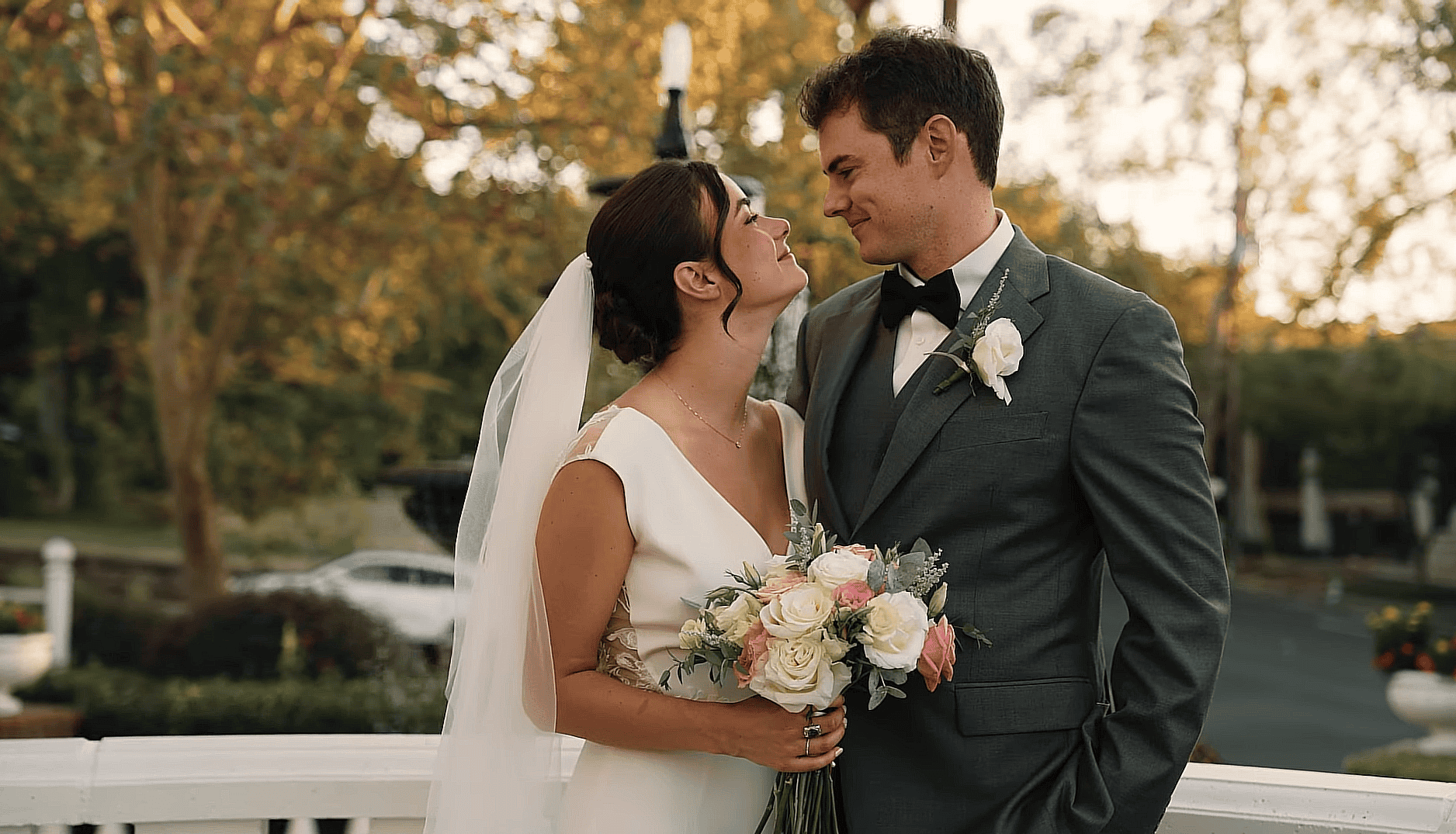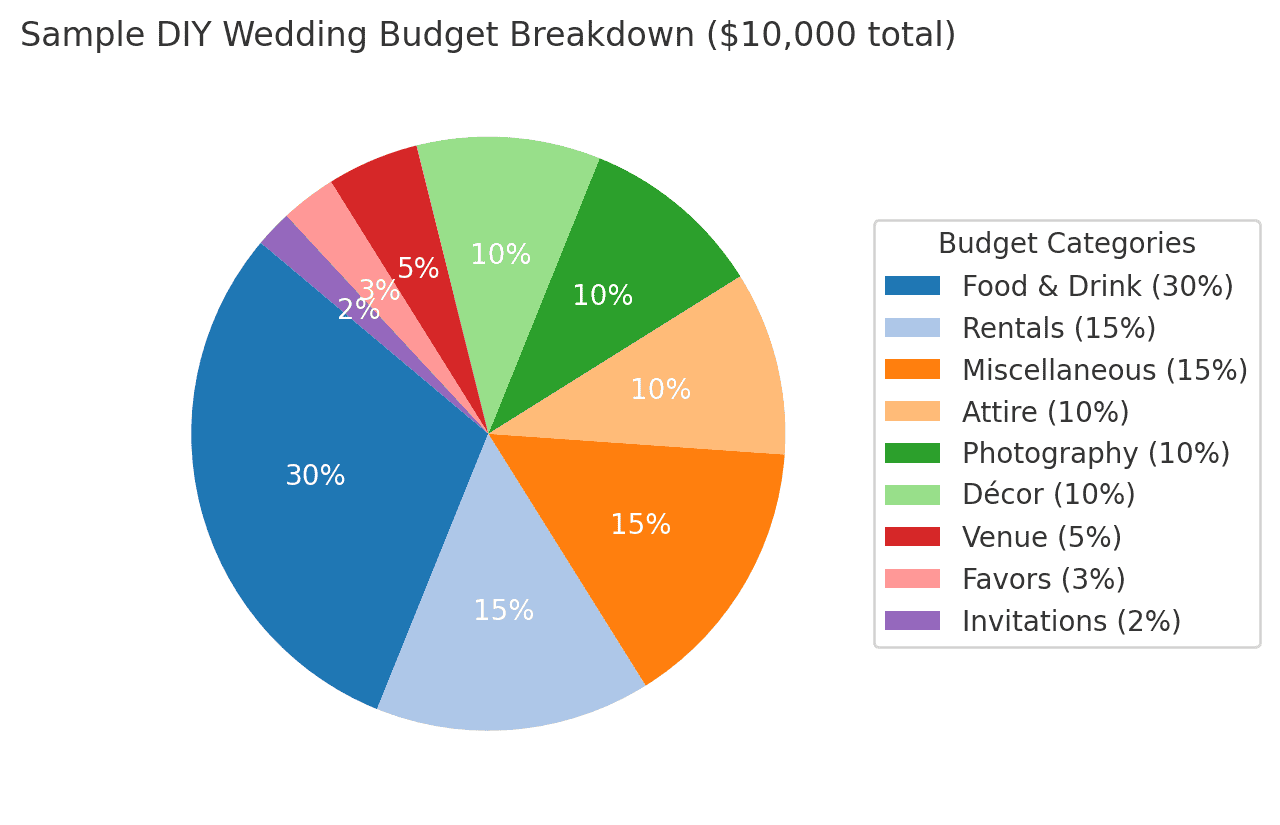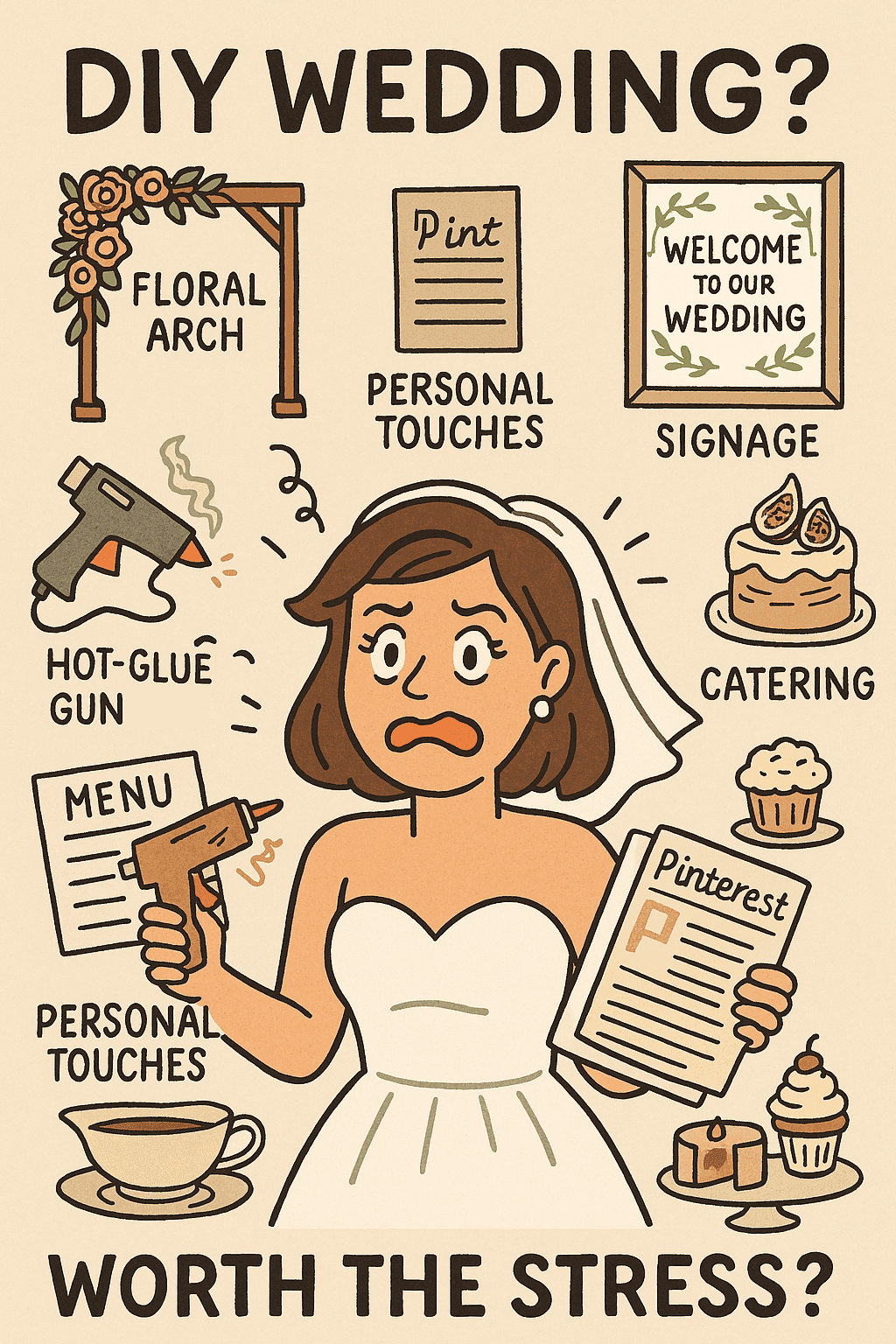From Pinterest boards gone rogue to late-night Google rabbit holes about “how to build a floral arch with zero experience,” the DIY wedding movement has been riding high for over a decade. And sure, the idea of crafting your wedding from scratch with hot glue, grit, and a few free Canva templates has a certain charm.
But here’s the real question: Is it actually saving couples money—or is it just moving the stress from your wallet to your last nerve?
With average wedding costs creeping toward $35,000 (and climbing), it’s no wonder couples are reaching for the glue gun. But cutting out vendors isn’t always the golden ticket to staying under budget.
In fact, sometimes it’s a fast track to spending twice—once on supplies, and again when you realize you need to call in a pro to fix it all anyway.
The Allure of Doing It Yourself
DIY wedding planning isn’t just about saving cash. It’s also about control. Want handwritten menus with lavender pressed into the paper? Done. Thinking of turning your backyard into a Boho-chic garden party using only fairy lights and willpower? Go for it.
There’s also a pride factor. You didn’t just plan a wedding—you designed the signage, baked the cake, built the centerpieces, and created a color-coded spreadsheet that could put NASA’s mission control to shame. There’s a whole aesthetic around being a crafty bride or groom, and social media feeds that make it look like a serene process filled with matcha breaks and well-behaved cats lying on fabric swatches.
But behind that filter? Sore backs, emotional outbursts, and at least one meltdown over floral foam. The reality check hits hard when couples realize DIY doesn’t mean “free”—it just means you’re trading money for time (and sometimes sanity).
Where DIY Actually Saves Money
Sweetsundayevents.comStationery and Signage
This one’s a win. Thanks to tools like Canva, VistaPrint, and your neighborhood FedEx, creating your own save-the-dates, invitations, seating charts, and welcome signs is easier than ever. You can design, print, and even send digital versions without forking over hundreds to a custom stationery designer.
If you’ve got an eye for design and aren’t afraid of a little trial and error, you could easily save hundreds (if not thousands) by skipping the calligrapher and going with DIY printables or e-vites. Just make sure you know your limits—Comic Sans isn’t ironic anymore, it’s just a crime.
Decor and Centerpieces
Thrift stores, dollar aisles, Facebook Marketplace—these are your new best friends. DIY decor has serious savings potential, especially if you start early. Mason jars? Cheap. Tea lights? Dirt cheap. Collecting old books, mirrors, or mismatched vases? Very on-brand for 2025 weddings and very kind to your budget.
Many couples are also getting creative with nature—think foraged branches, dried flowers, or even potted herbs that double as take-home favors. If you’re willing to invest the time and do some digging (literally or figuratively), this category can seriously cut costs.
Where DIY Can Backfire—Hard
Floral Arrangements
Here’s where dreams—and delicate blooms—go to wilt. You might think, “Flowers are just pretty plants in a jar. I got this.” Until you’re standing in a hot garage at 2 a.m. the night before your wedding, surrounded by dead eucalyptus and leaking buckets.
Florists don’t just arrange flowers—they source, transport, hydrate, prep, and assemble them with professional speed. Flowers are time-sensitive and fragile. Unless you’re Martha Stewart with a florist’s license, DIY florals can become a logistics nightmare. Not to mention, wholesale flower orders can still run you hundreds, and if half of them don’t open in time or arrive half-crushed, there’s no backup plan.
Photography and Videography
This is not the time to ask your cousin who “takes cool iPhone photos” to shoot your big day. You can skimp on the napkins. Not on the memories. Many couples who forgo professional photography regret it—especially when they realize there are no good shots of the ceremony, or all their pictures look like blurry ghosts taken through a greasy lens.
Professional photographers know where to be, how to capture candid moments without interrupting them, and how to edit those memories into something you’ll actually want to hang on a wall. DIY in this department may save a few thousand bucks—but what’s the price of not having any usable wedding photos?
Time: The Most Underestimated Cost
There’s a hidden expense in DIY wedding planning: your time. Sure, you can learn how to use a Cricut machine. You can create custom seating chart scrolls or bake 200 cupcakes yourself. But every hour spent crafting is an hour not spent relaxing, hanging out with your partner, or doing literally anything else.
Most couples underestimate the total hours DIY tasks require. What looks like a simple project (“just glue 150 labels on mini wine bottles!”) often turns into a weekend-eating monster that leaves you wondering why you didn’t just order them pre-made.
Multiply that by ten DIY projects and you’ll see how DIY weddings often take over your evenings and weekends for months. Time is a non-renewable resource—and in the months before your wedding, it’s often worth more than money.
Real Couples, Real Outcomes
Take Sam and Jules, who wanted a rustic backyard wedding and figured they’d DIY everything to keep it under $10,000. “We thought we were being smart,” Jules says. “But we ended up spending $8,000—plus about 200 hours of work. And we had to call a florist friend last minute when our flower plan totally collapsed.”
Or Ellie and Marcus, who created all their own signage, made favors, and hand-dyed linen napkins. “Honestly? It was fun,” Ellie says. “We loved the process, and it felt personal. But I wouldn’t say it saved us much. We probably broke even after buying supplies. Still worth it, just not cheap.”
The takeaway? DIY isn’t a money-saving hack—it’s a mindset. If you love crafting, want creative control, and don’t mind giving up evenings and weekends, it can be incredibly fulfilling. Just don’t expect it to slash your budget in half.
Smart Ways to Blend DIY and Pro Help
The sweet spot might be somewhere in the middle. Here’s how couples are mixing it up without burning out:
Pick your battles: Choose one or two key DIY elements to focus on—like creating your own welcome bags or building a photobooth backdrop. Outsource the high-stakes stuff like food, photos, and flowers.
Lean on pros for logistics: Many planners offer “month-of” coordination services. That means you can DIY the vision, then pass the clipboard to someone else once the big day rolls around. Your future self will thank you.
Outsource parts of the process: Not every DIY project has to start from scratch. You can design a menu on Canva, but have it professionally printed. Or bake your own cake, but hire someone to decorate it.
So, Is It Really Saving Money?
SweetSundayEvents.comTechnically? Yes—if you pick the right projects, use what you have, and keep the scope realistic.
Emotionally? That depends. Are you the kind of person who finds joy in color swatches and batch-spraying 100 miniature gold dinosaurs for place cards? Then you’re in for a good time. If you’re hoping to cut 50% of your budget without breaking a sweat? You might want to rethink your approach.
In 2025, weddings are all about intention. Whether you go full DIY, full vendor, or somewhere in between, what matters is that it feels like you. Not like an assembly line. Not like a Pinterest-fueled craft emergency. Just… like you.
And if that includes a thousand hand-tied ribbons and a handmade neon sign? More power to you.
Need real examples or cost breakdowns? Sites like Zola and The Knot often feature DIY wedding galleries, tools, and real couple budgets to browse for inspiration.
Bottom line: Yes, DIY wedding planning can save you money—but only if you’re strategic. Think of it as a recipe: it works when you follow directions, know your tools, and don’t try to substitute glue sticks for good judgment.




